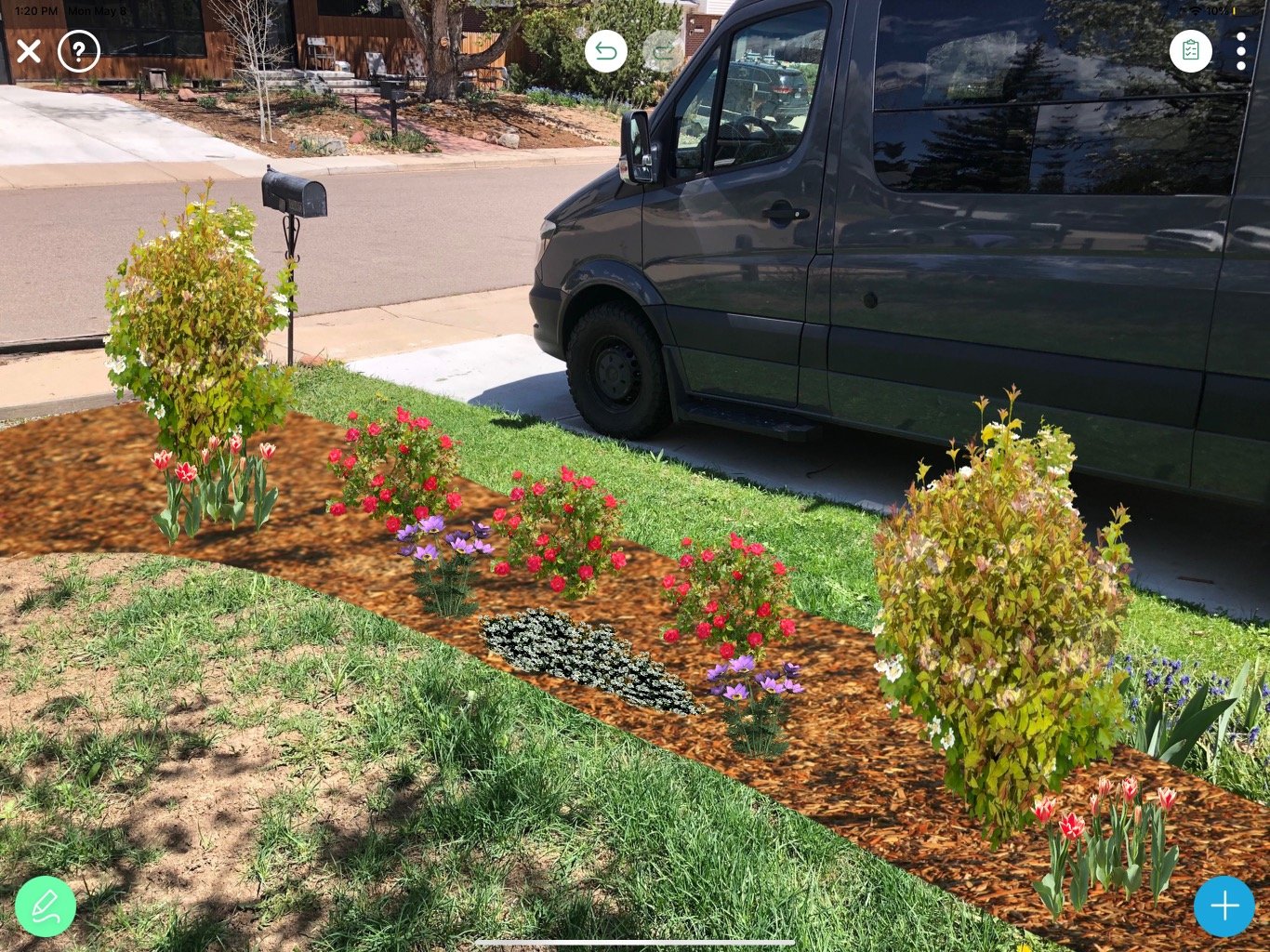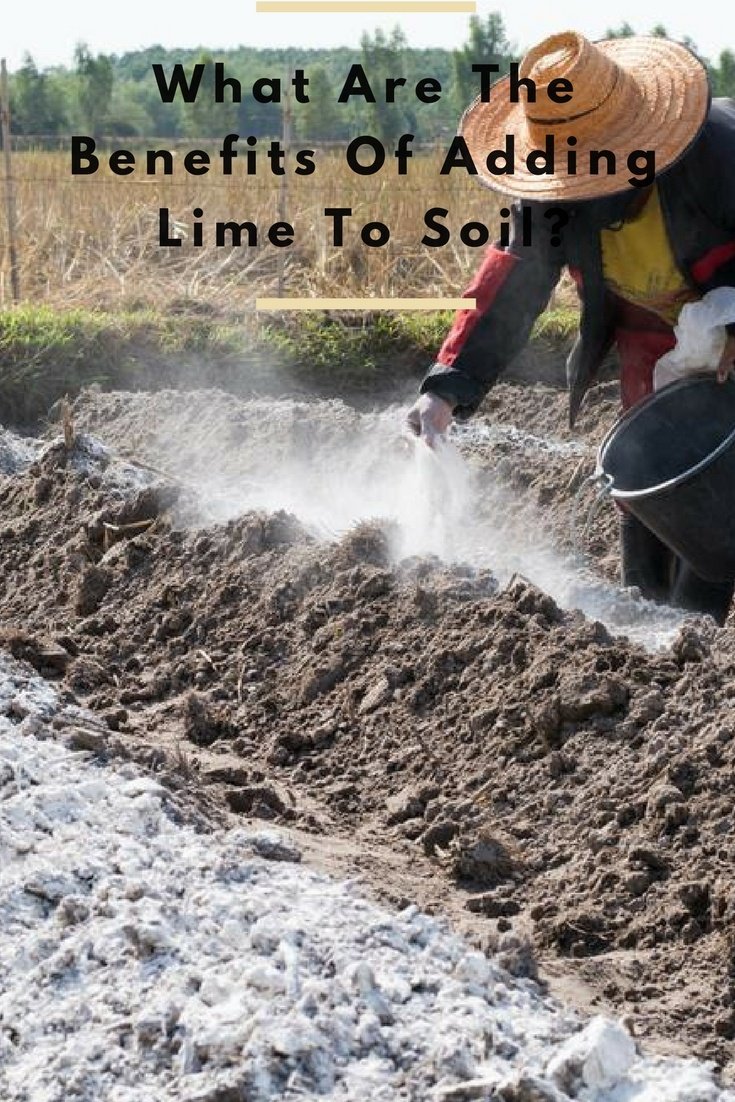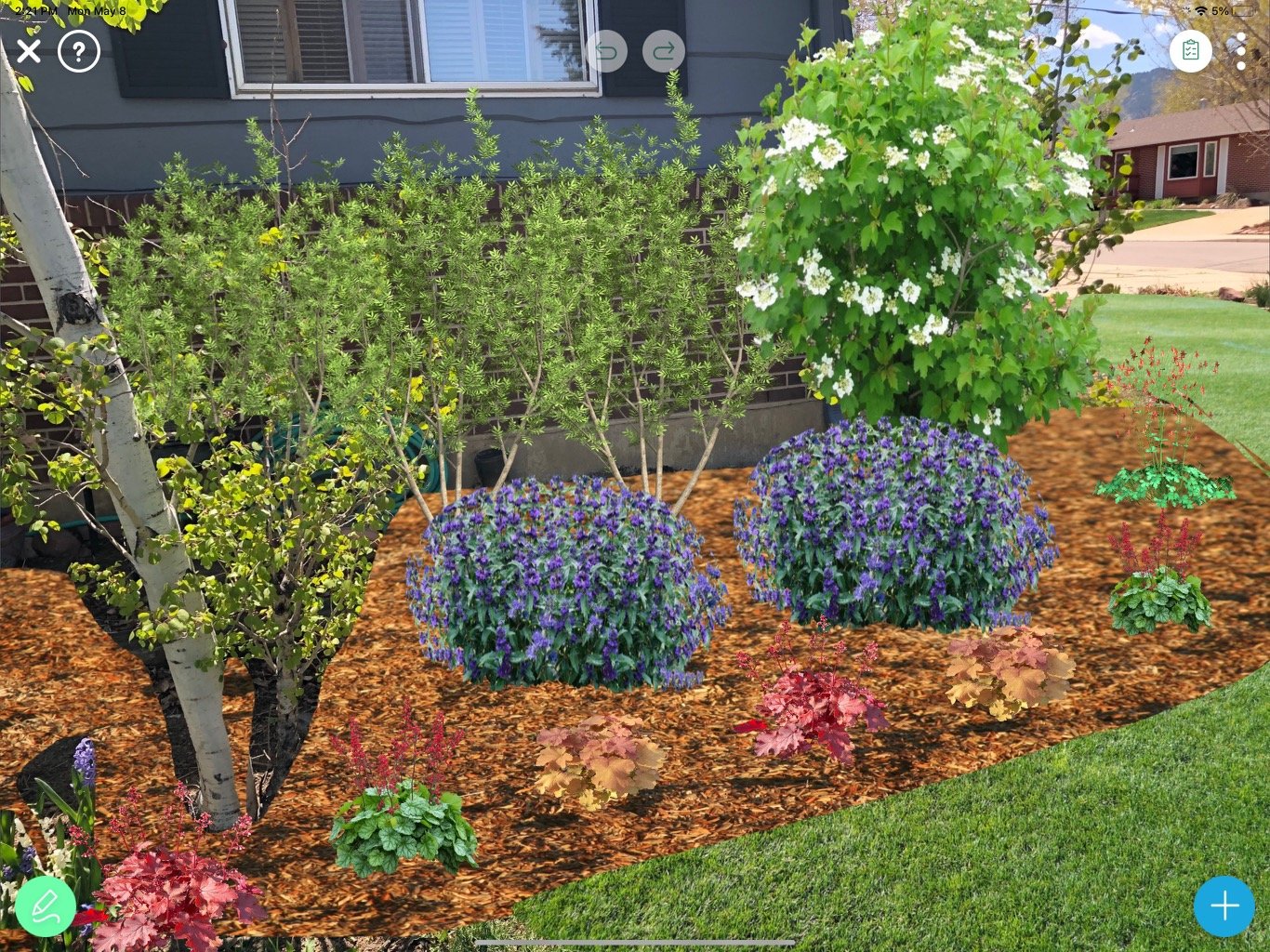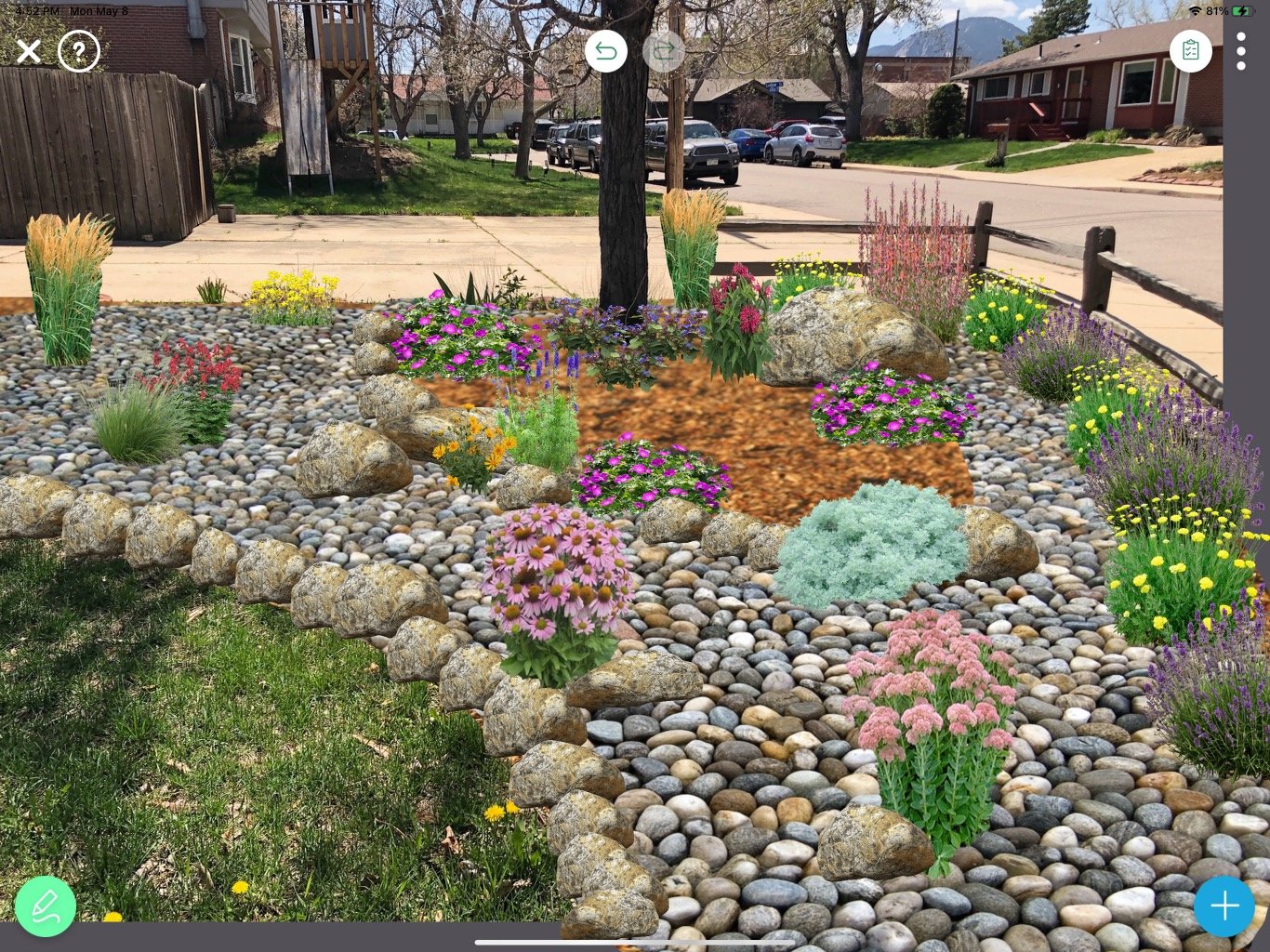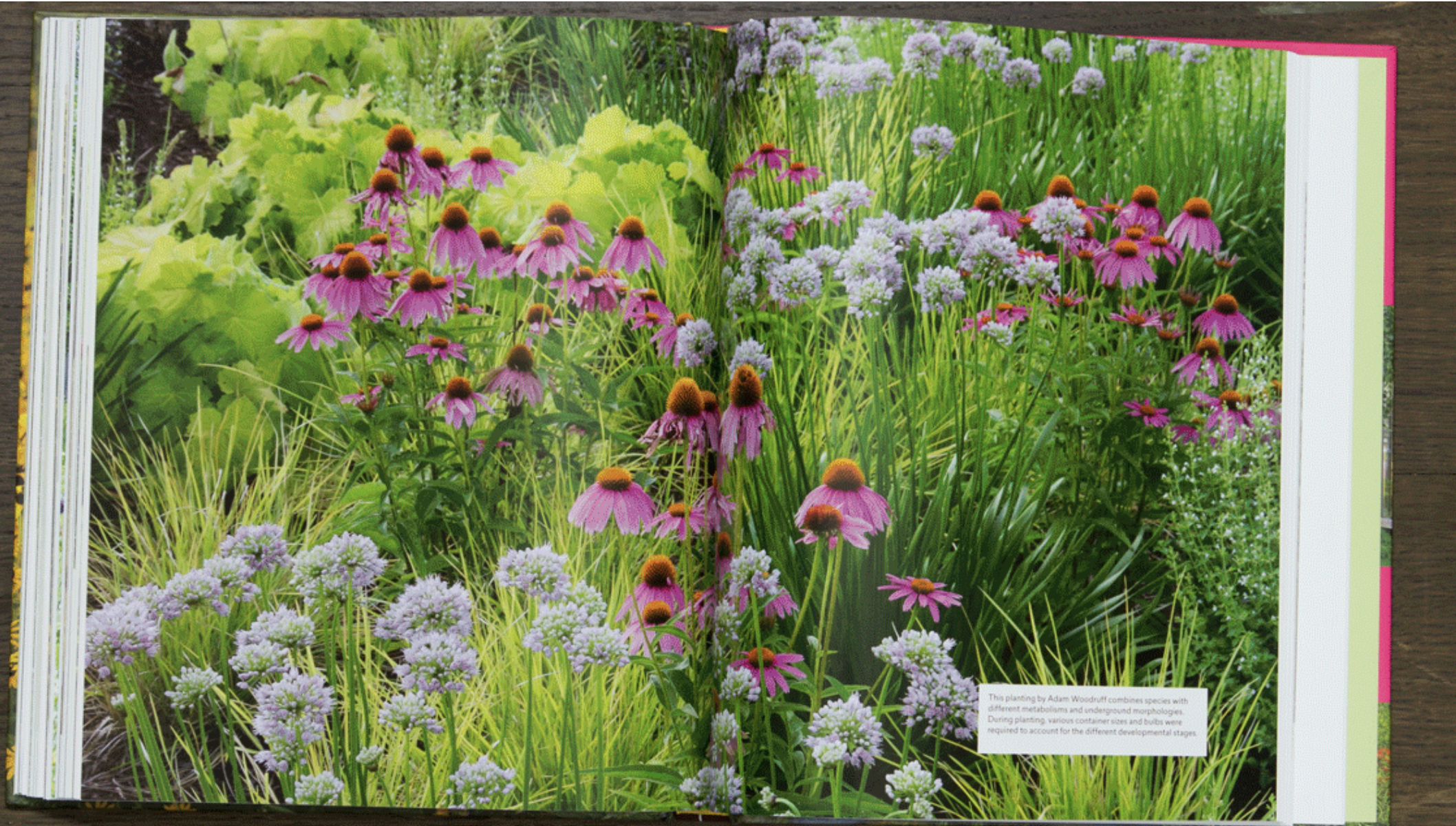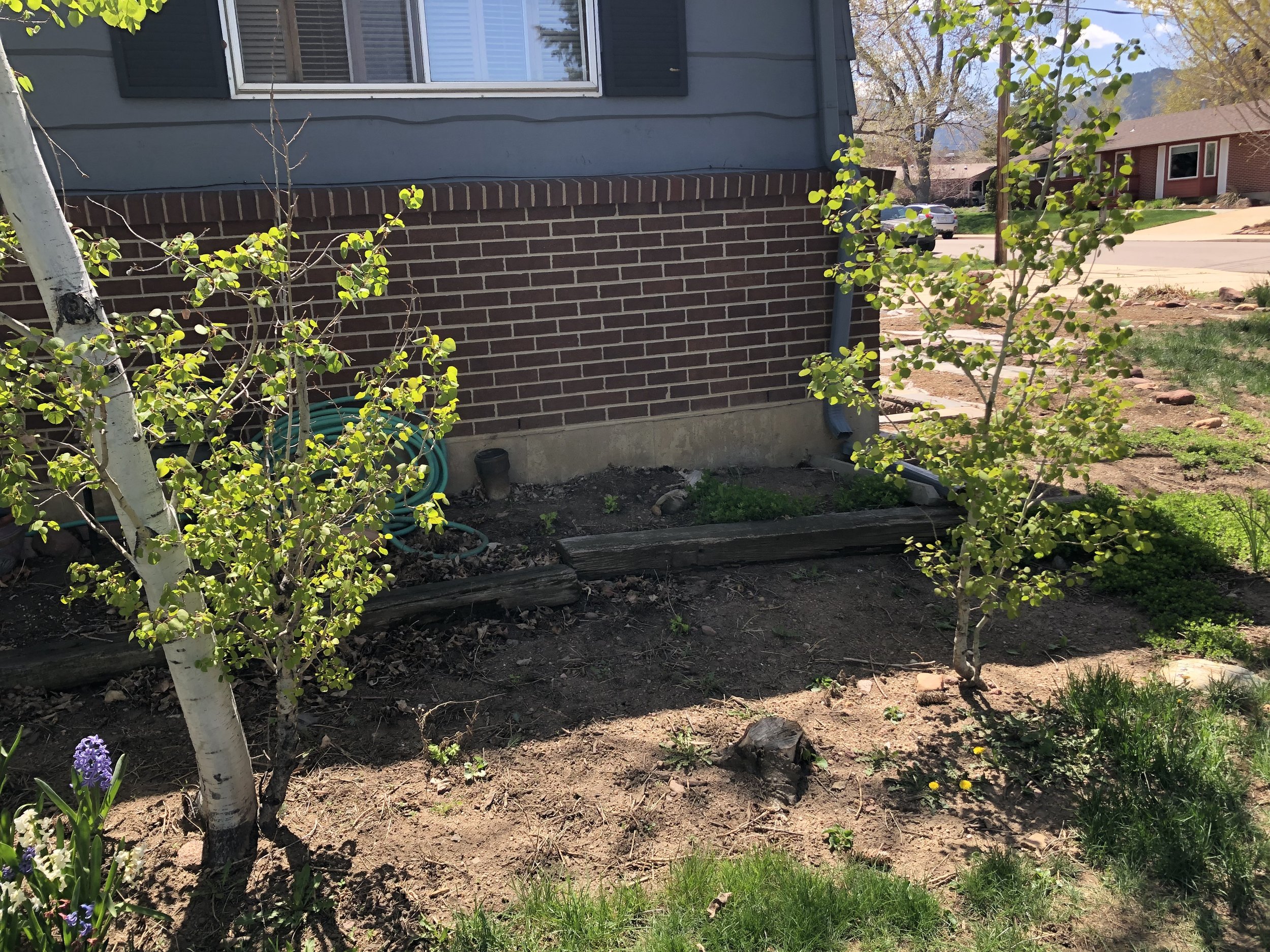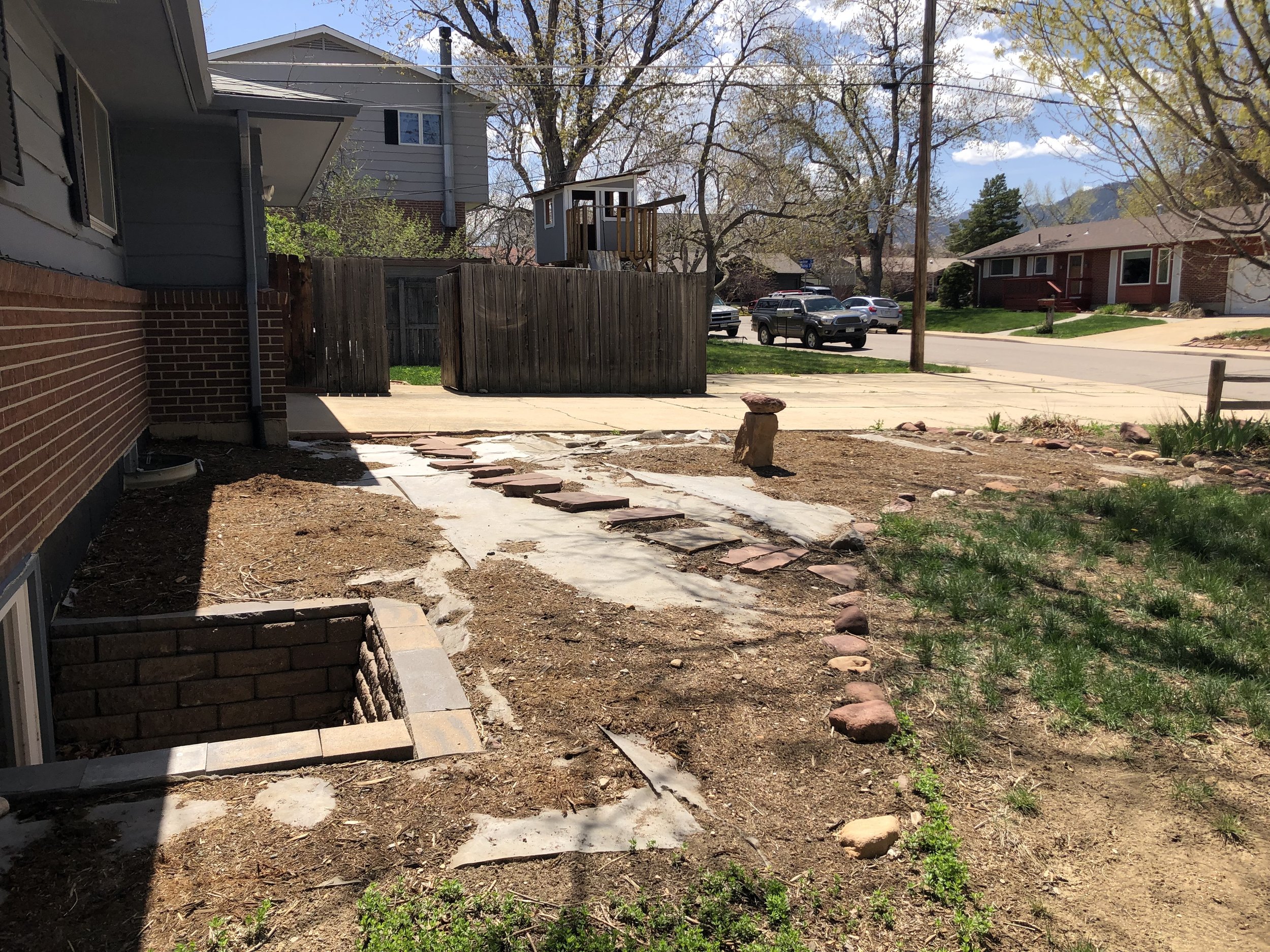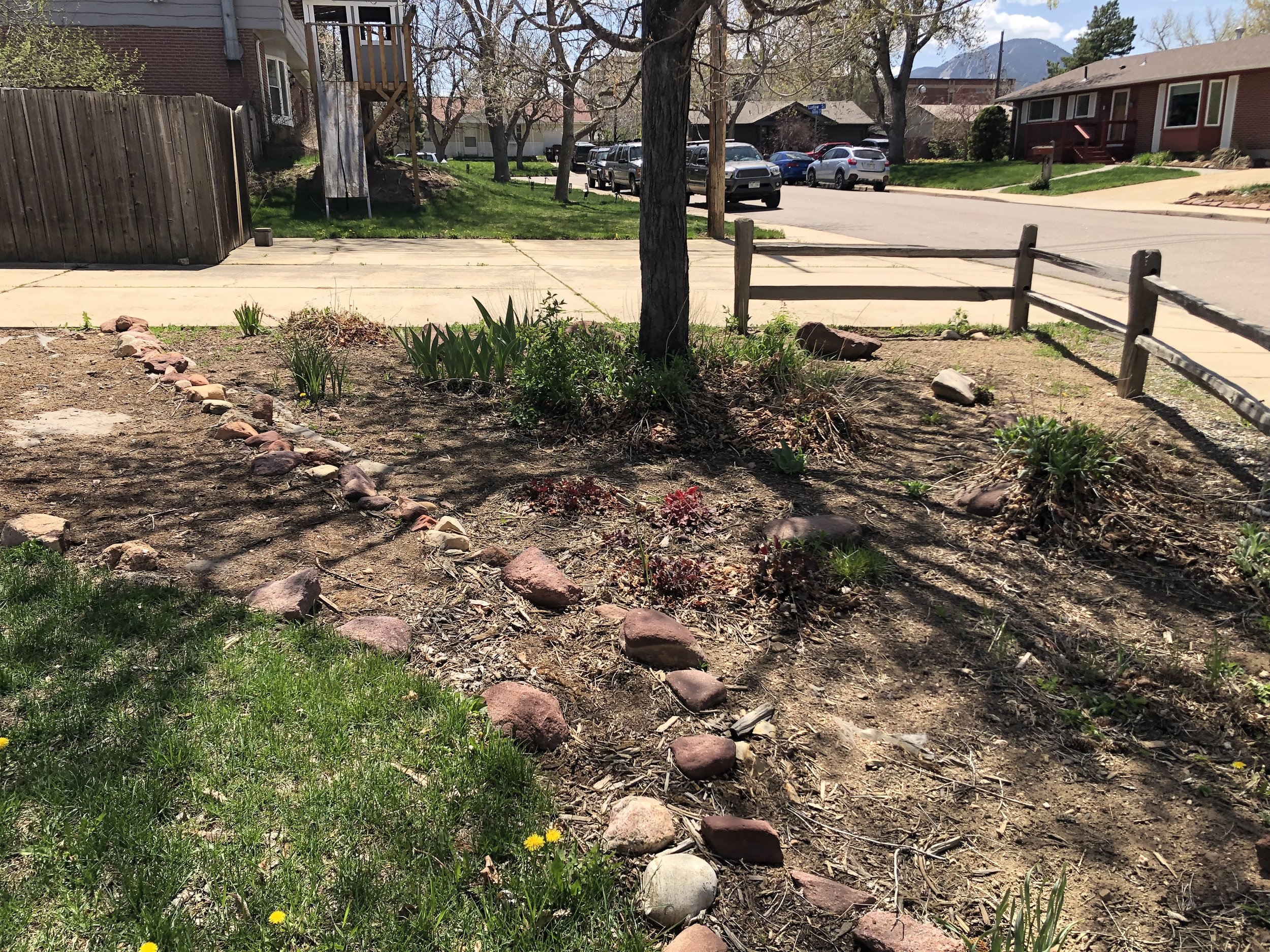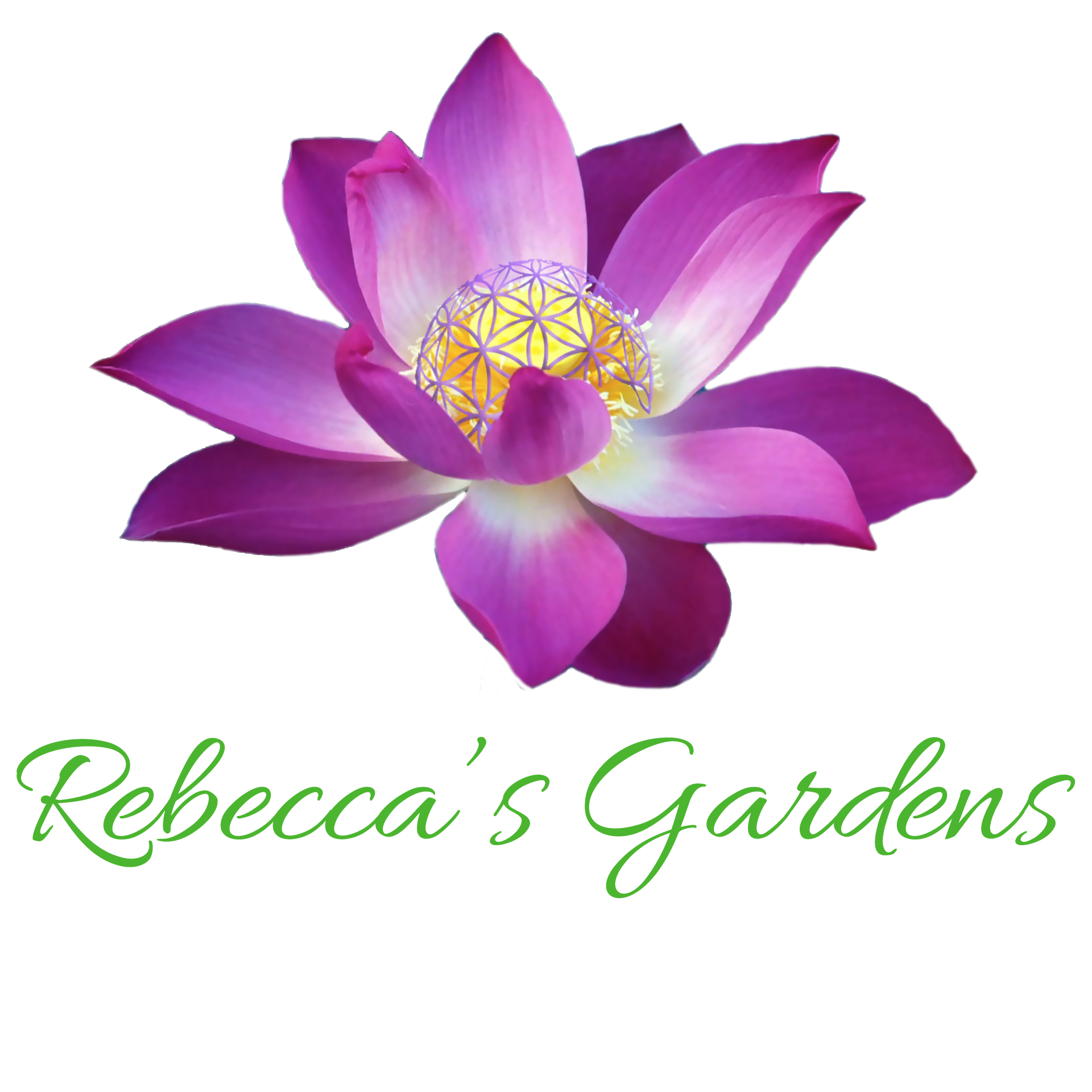4420 Hastings
Virginia’s Front Yard Refresh
INTRO + PROJECT PLANNING | GARDEN DESIGN + SECTIONS | PLANT + MATERIALS SUMMARY | RECOMMENDATIONS | RESOURCES
Your Project Page
QUICK OVERVIEW OF WHAT’S INCLUDED
WELCOME! Here’s what to expect of the planning process and how your Garden Plan works. Following your introductory meeting and initial payment, your project is now reserved in our schedule. Within a week of your initial meet, you are now receiving this direct link to your Project Page. This is where information will be made available throughout the evolution of the project and can be accessed easily in one place at any time for easy reference. You will find some initial information already uploaded, to be followed shortly with your design. We will let you know when to check your page for the design once we have uploaded it. Then we will schedule a chat by phone to walk through the page and the design together, and receive feedback. We will make the updates and check in again to make sure you have everything looking good. Then you will be ready to hand the design to your installation team. Easy.
Here are the basics of what you’ll find on this page (and more):
• OVERVIEW | PROJECT PLANNING This section in included to help give a sense of what’s involved from start to finish, how to plan in the correct sequence, and a basic understanding of what and who is typically involved for a project like this. You may also find suggestions for groundwork or prep to the yard that would be helpful to attend to or that would affect your plants or design before installation proper begins. We are helpfully equipping you with a basic run through that is just good to know, acknowledging that the direction and decisions are ultimately your choice.
• YOUR GARDEN PLAN = PLANT LIST + VISUAL DESIGN including a recommended plant list and a visual design for designated area/s. Your visual design will show the names of plants and where they go, referred to as the layout.
• RECOMMENDED PLANTS + MATERIALS This section is broken out in to two areas: Softscape (plants, soil, mulch, fertilizer, etc) and/or Hardscape (boulders, patio, walkway, wood, etc) materials that would be required or that would optionally fit the goals of the design and are offered for consideration. This is also where you will find specific details on any area of your yard in question, from fruit tree guilds to ‘what to do with’ a certain area, products to use, strategies, or anything helpful.
• ADDITIONAL PLANT RECOMMENDATIONS, should you wish to autonomously research and make adjustments or additions to the initial recommended plant list.
• RECOMMENDED GARDEN IRRIGATION We offer experienced quality recommendations to give a general sense of what might be needed or what would work best, but we are not a licensed irrigation technician so you will be required to give any recommendation to a licensed irrigation specialist or to your landscape installation team for actual review of viability and confirmation as we are not responsible for determining actual requirements or implementation; we leave it to them where it will be in good hands with their expertise.
• HELPFUL RESOURCES How-To videos, or video information / inspiration directly related to specific elements of your project, local plant and material vendors, trusted service suppliers, additional design references, and helpful references or exciting classes related to continuing garden learning and care.
• BEFORE + AFTER photo album. Pics of your current yard will be included, aka, the before. Once your project is installed, please send us some great pics (or invite us over to take a great pic) and we’ll upload it to showcase the beautiful transformation of your yard, aka, the after. If you like, let us know and we can give you a single image of your before/after to show friends or family.
Project Planning
BENEFITS OF PLANNING: You can visually walk through each area spatially, understand the needs of the microclimate or how it will be best used, as well as understand the sequences of what needs to happen in a certain order. From there, you’ll be able to schedule or budget any phases to the project and have a birds eye view of start to finish. You can look to see (or ask) where there are any requirements or missing pieces, double check your preferences or weigh potential risk factors that could save you from a costly mistake or simply know how long it takes to implement something. For example, it’s just as essential to think about your plants first even before hardscaping has begun, because often one informs the other.
Once you are ready to take action, a project typically starts with grading the land, then hardscape is defined or installed, the soil is amended, irrigation is laid, and finally plants, planting soil, and mulch are introduced.
MANAGING ROLES (+MAKING THINGS HAPPEN)
So who does what to make your garden come together?
PROJECT MANAGEMENT If you are making all the decisions and using various independent service specialists, then you are essentially playing this role. If you hire someone for this role, usually a General Contractor or a Project Manager will be assigned to act as the point person for everyone, essentially being the ‘glue’ that holds all the moving pieces of the project, budget goals, communications, and timeline together. If you work with a full service design and landscape company or partnership you will be assigned a project manager to be your point person.
TYPICAL INDEPENDENT CONTRACTORS (SPECIALISTS) INVOLVED ON A PROJECT
INDEPENDENT LANDSCAPE INSTALLER Each landscape company is unique, based on the combined skills of its team. Many are excellent stoneworkers, and can do irrigation on the side, yet have rudimentary understanding of plants or plant care, even if they offer basic maintenance and clean up. You can ask them what they specialize in and what they would refer to someone else. In terms of project management, a landscape team (installation) usually has a crew manager, responsible for the team’s deliverables. This person may or may not also inadvertently be willing to play a portion of the project management role, depending on the situation. They may also subcontract a part of what’s needed, say plumbing or machine work. Any team’s capacity is usually within the limits of their expertise, meaning they can’t foresee, advise, or plan integrations beyond what they have a current working knowledge of. It’s best to get second opinions to be sure you have all the necessary information and can take the best approach. For an excellent and trustworthy hardscape installation team, we recommend working with A Good Earth Maintenance.
INDEPENDENT GARDEN SPECIALIST Since, for example, a landscape installation team may specialize in hardscaping, and may not include plant expertise, it is advantageous to invite an independent Garden Specialist to help address things like the right plant list for your microclimate, or to provide other helpful information about how various elements, including irrigation, may best work together to sustain your end goals. They can also highlight what maintenance might be required after the installation process is complete. Rebecca’s Gardens offers this expertise as part of your garden plan anyway so you save.
INDEPENDENT TREE SPECIALIST Trees are a world of their own and provide innumerable foundational benefits to the health and character of the land and everything on it. It is highly recommended to work with a tree specialist for specific issues, or maintaining their healthy throughout their life cycles and seasonal extremes.
INDEPENDENT IRRIGATION SPECIALIST Depending on the needs of your environment or the existing irrigation system, you can either rely on a landscape team’s ability to work with basic irrigation, or you may truly benefit from an irrigation specialist’s wisdom and experience to help you troubleshoot, recommend, or install the required system to sustain your planned environment. Plants form systems and it follows that the irrigation requirements will vary from trees to lawn to various garden plantings, to xeriscape. It’s helpful to have a specialist who can recommend what’s best for all needs, make it easy for you to manage, cost effective, and who can make plans that address future potential access too.
FULL SERVICE LANDSCAPE COMPANY WITH ALL ABOVE ROLES ON AN IN-HOUSE TEAM
AND THERE’S ALWAYS FULL SERVICE: If your project and budget would be best served by delegating these roles, then the most logical and more integrated option is to contract with a full-service landscape business. They can offer you a well-planned experience, starting with a project manager to be your point person and to interface with on all areas of your plan, schedule, budget, and design. They provide value through an integrated team of specialists that covers all the bases (hardscape, softscape, and irrigation) including helpful risk assessment, and a more seamless experience due to their in-house communication and timeline. With an initial investment up front, working with a full service team is designed to bring you the best experience and recommendations which translates to real savings throughout the project as well as in the long run. Rebecca’s Gardens offers a partnership with our industry leading building and landscape installation team, Outdoor Craftsmen. If this is the service you want, please join us for a seamless landscape design and installation experience! We welcome inquiries about our services for your budget and to get a sense of what’s possible. Ask us today.
Ok, now that you have an idea of the benefits and scope of planning — Let’s See Your Design!
Your Front Yard Design
2D PLANTING LAYOUT
PLANT NAMES + PLACEMENT
Breakouts by Designated Yard Area
FRONT YARD
DEFINE LAWN BOUNDARY (EAST) | WINDOW GARDEN (EAST) + APPLE TREE LAWN | WINDOW GARDEN (WEST) | WEST GARDEN BY DRIVE | BACKYARD
Define Lawn Boundary (NE Corner)
GOAL a) To define your property line, and (b) to reduce the volume of weeds coming into your lawn from the neighbor’s strip along the drive.
The following approaches will fulfill these goals:
MATERIALS
Remove sod and replace with GRAVEL or COBBLE to match the front swath of rock along the fence line.
Use weed barrier and edging as needed.
PLANTS
See your DESIGN LAYOUT above for refererence
I see value in adding a few more plants to that section to help define your yard. Here are two options that reflect the two planting styles currently in use in your front yard garden sections. Both offer continuity:
(A) Extend the larger shrub planting style along that new property line, by placing a few shorter shrub roses and another ninebark to match the one that needs replacing.
(B) Extend the perennial flower garden by planting spring/summer/fall blooms.
(C) Blend the styles and use both shrubs and flowers.
Visualization of Planting Option (C)
Window Garden (EAST) + Apple Tree Lawn
FINE FESCUE
In the same family as tall fescue, fine fescue is a low-maintenance cool-season grass perfect for busy homeowners across Denver. Fine fescue gets its name from its long, narrow blades. It’s a turfgrass that grows well in high elevations and can be planted in rocky and sandy soils. If your property is shaded, fine fescue would be a great option because it thrives in shady locations. If you have areas that receive plenty of sun, you will want to mix fine fescue with blue grama or Kentucky bluegrass.
The grass’s dense turf can be tough to cut, so be sure to have sharp mower blades. Fine fescue is highly susceptible to fungi like red thread and dollar spot.
Classification: Cool-season
Spreads By: Bunch forming and spreads by tillers
Shade Tolerance: High
Drought Tolerance: High
Foot Traffic Tolerance: Low
Maintenance Needs: Low
Recommended Mowing Height: 2 ½ – 3 inches
Grass Seed Options:
– Outsidepride Legacy Fine Fescue Grass Seed (5 lbs.)
– Eretz Creeping Red Fine Fescue Seed (choose your size)
– Outsidepride Creeping Red Fine Fescue Grass Seed (25 lbs.)
– Outsidepride Hard Fine Fescue Grass Seed (10 lbs.)How to germinate, irrigate, and maintain:
GOALS
a) Define a cleaner front garden edge underneath the east front windows,
(b) Bring the vinca back to within the newly defined garden edge, (c) seed under apple tree with shade mix,
(c) Reseed spotty lawn area under crabapple with shade tolerant grass species.
The image to the left is for conceptual purposes only. See below for specific species recommendation. Use a shade tolerant variety of grass seed and expect it realistically to look thinner yet still provide adequate coverage. Here are some of the best options in the area:
Best Grass Types For Shade
√ Use a Mix of Fine and Tall Fescue [as follows]
√ Purchase Seed [per square foot coverage] at local BBB Seed Co
TALL FESCUE
Tall fescue is known for its adaptability because it can withstand cold, heat, drought, and shade. It is a dense grass with a deep root structure, making it a hardy grass that needs very little watering. This cool-season turf can tolerate heavy foot traffic from kids and pets. It can grow in all soil types regardless of its pH level, as long as the dirt is well-drained.
It is slow-growing and won’t invade gardens and flower beds. It also may require overseeding to remove bare spots and promote thick growth.
Classification: Cool-season
Spreads By: Bunch forming and extends by tillers
Shade Tolerance: High
Drought Tolerance: High
Foot Traffic Tolerance: High
Maintenance Needs: Low
Recommended Mowing Height: 2-3 inches
Grass Seed Options:
– Triple-Play Tall Fescue Grass Seed Blend (5000 sq ft)
– Eretz Kentucky 31 K31 Tall Fescue Grass Seed (choose your size)
– Pennington The Rebels Tall Fescue Grass Seed Mix (7 lb.)
DIY Basics For Seeding Your Lawn
REFER TO YOUR LANDSCAPE OR LAWN SPECIALIST FOR CONFIRMATION OF PROTOCOL
• Seeding is best done in Spring or Fall when temperatures are cooler. That said, shade application naturally stays cooler so seeding can be done anytime.
• Measure the square footage of the shade area in question, and purchase the volume of seed recommended for coverage
• Hand spread (sprinkle like you would if you were feeding chickens). Try to be as even in distribution as possible. Use a mechanical seed spreader if desired.
• Sprinkle a light flaky compost on top of the seed, no more than 1/4”. We recommend Soil Pep, available at McGuckins.
• Set up a sprinkler at the end of a hose and keep the seed moist until germination - usually for the first 1-2 weeks. Continue the watering schedule for another week as the roots establish. Then you can slowly back off the water step by step. The seed will stay more moist in the shade, but don’t let it dry out. Sunny areas require water 4x/day for 5 mins. Shade may require 2-3x/day at first, then 2x/day, then 1x/day, then every other day, until you reach a point when it can adjust on its own, and maybe you need to water just during the super hot/dry spells. Adjust as needed for shade, evaporation or any other microclimate conditions.
• Do not tread on the new grass, or the moist soil which may become compacted, preventing seedlings from taking root effectively.
• After 3 weeks, observe how much as begun to fill in. Repeat the process as needed. Re-seed (also called Overseeding) and water for another 3 weeks the areas that still need to be filled in.
Window Garden (WEST)
GOAL
a) To design the garden area and make it look better than the empty space and compact soil it currently has.
(b)
Recommendations:
• Address compact soil conditions by using amendments. This will prep the area enough to support recommended plantings without struggle
• Add LIME in designated garden areas to increase soil alkalinity / decrease acidity. DO NOT ADD where viburnum, roses, or burning bushes will be.
• Introduce part-shade tolerant shrub/s and flowers
• Use 2 different size river rock (sometimes referred to as cobble) to define the area visually. For example, use 1-3” size where you would use the mulch such as around the trees, and use 6” size throughout the rest of the rocked space.
Adjust the Soil Ph
The existing soil may be higher in acidity due to the previous juniper bushes that grew in this garden and other locations around the property for decades before being recently removed. Higher acidity makes the soil a less hospitable environment for most recommended new plantings. Therefore, it is recommended to amend the soil to decrease the acidity while increasing alkalinity.
One easy way to do this is to add Lime powder. When lime is added to soil, these compounds work to increase the soil's pH, making soil less acidic and more alkaline. Even though lime includes calcium and magnesium, which are essential nutrients for healthy plant growth, it's not a substitute for fertilizer.
The best application of the white lime powder is to loosen the soil in the garden bed 6-8” with a pitchfork and sprinkle the lime in (refer to the product for volume and directions). Then slowly water it in so it soaks in evenly, and doesn’t run off or pool. Then wait a few days for the water to disperse the application before introducing new plants.
When installing new plantings, remember to use a fresh 50-50 or 2-to-1 compost-to-soil ratio and water evenly, thoroughly, and regularly while new plants become established.
Acidity Is Still Best For Some Plants
Keep in mind that some plants thrive in more acidic soils, so only use lime where plants do not prefer acidity. Likewise, at least for Roses, you may need to add an amendment that increases soil acidity:
• Roses • Viburnums • Burning Bush
South West Garden
Create A Dry Creek Bed
FEATURE OPTION
Using river stone (cobble) in this section gives you the option to create a dry “Rock Creek” feature running through the landscape.
• Ideally, featured on the inside of the Maple tree in the SW corner
• Choose to make a crescent shape -or- to have it naturally meandering through the landscape as one would see in nature.
• Create a slight topography by piling excavated dirt from the center of the ‘creek’ line, along the sides to accentuate a low wide gentle trench
• Lay down 2x weed fabric over the entire width of the creek and 1x on the sides
• Use smaller rocks in the creek bed and various size larger rocks to define the sides
• Allow plantings to be spaced sporadically along the edges, perhaps next to a decorative larger stone or two.
STREET CORNER
GOAL a) To design the garden area and make it look better than the open space and compact soil it currently has.
Recommendations:
• Address compact soil conditions by using compost and shale amendments. This will prep the area enough to support recommended plantings without struggle
• Add LIME in designated garden areas to increase soil alkalinity / decrease acidity
• Introduce a mix of full sun to part-shade tolerant shrub/s and flowers
• Use 2 different size river rock (sometimes referred to as cobble) to define the area visually. For example, use 1-3” size where you would use the mulch such as around the trees, and use 6” size throughout the rest of the rocked space.
ALONG DRIVEWAY + WEST SIDE OF HOUSE
GOAL a) To design the garden area and make it look better than the open space and compact soil it currently has.
Recommendations:
• Address compact soil conditions by using amendments. This will prep the area enough to support recommended plantings without struggle
• Add LIME in designated garden areas to increase soil alkalinity / decrease acidity
• Introduce full sun tolerant shrub/s and flowers
• Cobble area around the lawn edge
• Use 2 different size river rock (sometimes referred to as cobble) to define the area visually. For example, use 1-3” size where you would use the mulch such as around the trees, and use 6” size throughout the rest of the rocked space.
Your Plant Pictures
YOUR PLANT PICTURE GALLERY IS HERE
√ Check out what your plants will look like when mature.
√ Check out our PLANT PACKAGES for more inspiration or to add selections to your garden later.
Your Plant List
LIST OF PLANTINGS FROM ABOVE DESIGN: EXISTING | RECOMMENDED FROM DESIGN | ADDITIONAL CHOICES
Materials Summary
BALANCING HARDSCAPE + SOFTSCAPE
SOFTSCAPE
Softscape refers to PLANTS, SOIL + MULCH — Basically any of the living organic matter or plants that make up the landscape, that are not the structural rock or hard materials used.
SOIL AMENDING
The health of your plants is first and foremost about the health of your soil.
After sod removal, and before adding plantings or groundcover, it is highly recommend to:
1) Aerate the existing soil (using footwear gear or holes punched by a rented aeration machine). If possible, do not till up the soil.
2) Add a layer of clay-busting amendment such as Soil Pep (available at McGuckins)
3) Add a layer of soft organic compost suitable for outdoor horticultural garden use (add a layer to the top of the exposed soil)
4) Optionally add 1/8th volcanic rock or perlite (to lighten soil structure and increase moisture retention)
5) Slow water. Let the amendments soak down with slow watering (to avoid fast runoff) before planting.
6) Now your soil is ready to be planted. By nurturing the soil before planting, you increase the success rate of your introduction, robustness, and longevity of your new plants, as well as contribute to a healthier ecosystem.
PLANTING
Here are our recommended planting soil blends, available at local suppliers such as McGuckins:
• The Bomb — Paonia Soil Co
• Sheep ‘n Peat — Earth Essentials
• Ocean Forest — Fox Farm
HARDY GROUND COVER AS LAWN ALTERNATIVES
Another native option for reducing mulch, is to use living ground cover. Here is a robust list of species-select ground covers to choose from that will work in your garden design. In addition to your recommended plants in the design, you can always use this list to try adding a new variety or two to your garden at any time.
Steppable Flowering Groundcovers 2-6” H
→ Mediterranean creeping thyme (Thymus longicaulis)
→ Elfin creeping thyme, multiple species and varieties of Thymus praecox and Thymus serpyllum
→ Wooly thyme (Thymus praecox subs. britannicus)
→ Veronica, creeping, aka speedwell (Veronica filiformis)
Delicate Flowering Groundcovers
1-5” H
→ Adjuga (6”) full to part shade
→ Alpine “Mock” Strawberry (Fragaria vesca)
→ Creeping Jenny (Lysimachia nummularia)
→ Clover (Microclover, Red clover, Crimson clover, White Dutch clover) lifespan 3-5 yrs, requires reseeding
1-5” H cont…
→ English Daisies (Bellis perennis)
→ Lamium (4”) full to part shade
→ Plumbago (6-8”h) sun or shade
→ Redwood Sorrel (Oxalis oregana)
→ Sedum, dragonsblood (Sedum Spurium)
→ Sweet Woodruff (6”h) full to part shade
Delicate Flowering Groundcovers
6-10” H
→ Bugleweed (Ajuga reptans)
→ Lamb’s ear (Stachys byzantina)
→ Phlox, creeping (Phlox stolonifera)
→ Prairie Smoke (Geum Triflorum)
→ Rockcress (Arabis) *wide spread
→Wild Ginger (Asarum canadense)
→ Wintergreen (Gaultheria procumbens)
SOD REMOVAL
If the landscape company is planning to rent or use a sod-removal machine for turf removal, please refer to these guidelines: Landscaping Around Trees, offered by local tree expert, Fred Berkelhammer, owner of a local tree company, that highlights the risks to your Maple. Avoid using a Skid Steer for removal.
The key is to avoid scraping the tops off the tree roots, which will subject your tree to immune system challenges and potentially risk the health of the tree and/or be costly to you for caring for it.
Recommended: Use hand tools to gently remove sod within a 6-8 ft circle around the trunk and be extra careful if using a machine, for example, keep it at a minimum depth setting.
FLOWERS + SHRUBS
See your Recommended Plant List + Layout above to get an idea of the planting approach. Timing is flexible on when you introduce plants, whether this spring or later in the season. When you give your desired Plant List to your landscaper, they can give you an updated estimate.
NATIVE APPROACH
To the left, you’ll see an alternative option for how to plant any garden area using native low water plants, without a lot of mulch, using broad coverage of low decorative rock, and wide spreading flowers and low shrubs. Let me know if you’d like to see more of this native style in any of your garden beds.
Thyme + Veronica
Clover
Creeping Jenny
viewable up on 4th + hawthorn
False Strawberry
MULCHES
SOIL PEP — We highly recommend Soil Pep as a top dressing to any horticultural garden in Colorado. This light flaky bark chip mulch can be used underneath heavier top mulches such as ‘gorilla hair’.
Soil Pep is both a mulch and a soil conditioner, meaning it has double value. As water softens, it breaks down and mixes into the existing soil, adding nutrients and helping to bust up existing clay pockets or hardened slightly compacted soil structure. It also is a nice visual top dressing to create an even feel. Keep in mind though, that it is so light weight that the wind will take it if not kept moist. Only for use in horticultural beds, not vegetable.
NATURAL WOOD BARK
GORILLA HAIR — Our most recommended type of mulch for the front range is called Gorilla Hair. The gorilla hair mulch allows water through to the roots of surrounding plants and flowers without letting it evaporate too quickly. It is useful in zones with fluctuating temperatures and seasonal extremes for it warms roots in winter and keeps the ground cooler in summer. Because the soil is kept from being exposed, it is assisted in maintaining a healthier structure and moisture level, supporting natural processes beneficial for healthy plant roots. Additionally, the fibers weave together forming a natural mat, preventing wind stripping, when used in sufficient quantity for it to work properly. This mulch typically requires a percent of the total volume to be replaced every other year or so.
TIP: To keep it looking fresh, simply turn or ‘fluff’ the mulch from time to time, or once in the spring.
Recommended For Your Garden Areas as designated:
• Redwood gorilla hair mulch at least 3” deep for any designated garden areas. Volume will typically settle down with weather, snow, and water.
HARDSCAPE
Hardscape refers to THE GRADE OF THE LAND, STONE, + STRUCTURE — Hardscape refers to any hard foundational element that defines your landscape, such as decorative boulders, concrete, or other materials used in walkways, patios, or drives, as well as building materials that define a growing or planting area or around which to work, such as buildings, walls, or other built features.
GARDEN EDGING
You have existing garden edging. You can choose to keep your existing edging if the new plan does not require removing it. Any pieces of existing edging that are bent, broken, or rusted should be removed for safety and replaced with a new functional piece.
Where additional edging is needed, we always use and like to recommend a ‘roll top’ galvanized steel edging with a powder coated color (we prefer brown) for longevity and safety. bent, broken, or in the way of the new garden line when you begin work.
You do have an aesthetic choice to use River rock (cobble) in a portion of the garden areas, so this type of edging is typically quite helpful when delineating it from the lawn, or from different materials, making the design appear fluid and clean, as well as creating safety by retaining materials within a designated area.
Recommended: Brown galvanized steel “roll top” edging with stakes
Vendor: CPS (Colorado Pipe and Supply) in Arvada
Note: they are wholesale only, but your landscaper should have an account there
NATURAL WEEDING OPTIONS
Click the links to read more or find out DIY tips
• Best Applications for Vinegar
GARDEN ROCK
River rock, or Cobble, is a type of smoothed river stone that comes in a variety of sizes. The style I envision would work best for your garden design is sold locally by the title of “Grey Rose” in 6-12” or similar. The actual stone sizes in the mix vary from around 4”—15”, but the average stone size is “palm sized”. It has an overall even look, comprised of a range of medium to light tones. For accent areas, you may also consider Mexican River Stones, which are darker in color, smoothly rounded, and of roughly equal size, providing an even continuity and a subtle tone contrast for your garden area. The value is slightly higher than river cobble.
Recommended: Cobble 8-12” “Grey Rose” or similar for any designated rocked garden areas. This style is the most natural with a some color variation.
Vendor: Colorado Materials, Longmont
WEED BARRIER FABRIC
The use of weed barrier is a choice. It’s helpful to prevent weeding in smaller horticultural garden areas such as yours. It is believed that if you don’t use it, you are saving the health of the soil over time. However, at the same time you need a robust weed management program. So, it's something we still recommend in small areas and in certain cases.
If you do want to use weed mat, this (left) is what you're looking for, ideally, (not the grey stuff, which is a lighter weight and weeds can push through more easily).
Benefits of weed barrier: It does allow air, water, and nutrients to pass through, just not weeds. It's great for xeriscape, and under rocked areas. It is designed to last 5-10yrs, if not exposed to the elements. It is suitable for small areas like this.
Recommended: Black woven weed barrier fabric, heavy grade
Vendor: CPS (colorado pipe and supply) in either their Longmont or Boulder location
It's wholesale, but your landscaper will likely have an account there
Additional Recommended Products + Local Vendors
CLICK HERE to view our short list of recommended natural products and local vendors
for horticultural and vegetable gardens.
Irrigation
Do my xeric and low water plants need irrigation?
Yes, all newly introduced plants need automated irrigation. This is because they are grown in a nursery and have developed in response to a regular watering system with soft nutrient rich soil in a regulated environment. To become adapted to a new environment they will need time. Start by matching the care they are used to by using regular automated drip, this will help their roots become strong as they become exposed to the new soil conditions and extremes of the environment, then slowly adjust the watering time toward your goals. Doing so in stages over several months or a full season will provide the best curve for successful adaptation with minimal plant loss.
RECOMMENDED: To use water most efficiently, I highly recommend using a drip system for your front yard design.
When to install? Drip goes in before or at time of plantings. Each plant needs to receive a 1/4” tube with emitter directly to its roots. Situate the tubing above soil and easily accessible yet visually hidden just under mulch or rocked areas.
Basic System Requirements:
• Identify a free valve on your manifold + dedicate it as a drip zone
OR Transform your lawn irrigation zone into drip by capping the heads
• You can adjust the drip zone run time/days on the timer/clock
• You can also plan for (or adjust) water flow needs to specific plants using the drip emitters that will be set to drip at each plant root.
• Make sure the main drip line snakes through the entire yard (to the areas where plantings will be) and around the Maple tree (at the drip line).
• Installation of drip through mulch or rocked areas should visibly hide (not bury) the line just out of sight, and above the weight of excess material.
Recommended: Check with an irrigation specialist that knows plants and plant needs for the most efficient solutions. Your landscaper can always do the labor if you prefer. Best to know what’s ideal first and prevent losing plants or a costly future re-do.
Maintenance
RECOMMENDATIONS
Low Water + Xeric Plant Care
• (A) Learn what the plants need and provide some DIY care yourself
• (B) Hire a maintenance team to care for your landscape (or both!)
√ monthly — typically April/May — Oct/Nov
√ spring/fall clean up
You Tube How-Tos
View recommended You Tube videos below for How-Tos on maintenance for your landscape.
We recommend speaking with the maintenance professional who will be caring for your garden for details.
Comprehensive DIY Seasonal Care Plan
Prefer To Get Your Custom Maintenance Guide Directly From Rebecca’s Gardens? We understand!
We understand plants. We understand humans. We’ll make this introduction smooth and friendly so you’ll be a more confident and welcome steward in your garden. Here’s what you get:
For just $250, we will ask you how you plan to work in your garden, and what you want to delegate. We will put together a customized plan for you to DIY, and make recommendations for who can handle the rest.
Your Maintenance Guide includes:
• All information accessible on a private URL web page, just like this page but separate, for easy reference and links
• 4 Season Care Plan by type and species
• Spring prep / Fall clean up (how-to)
• Species specific requirements (this may include designated species, but may not apply to all species)
• Fertilizers / Natural pest prevention
• Soil Amendments
• Mulches
• Additional custom information as needed
More Ways To Make Your Gardens Grow
ADDITIONAL ROCK GARDEN PLANTS FOR ADDING IN AS YOU GO
Achillea argentea
Androsace lanuginosa
Armeria maritima (thrift)
Kniphofia 'Dwarf Yellow'
Pulsatilla vulgaris x
Pulsatilla patens 'Eastern pasque flower'
Helianthemum 'Wisley Pink'
Helianthemum nummularium 'Single Yellow'
Rhodohypoxis milloides
Geranium renardii
Helianthemum 'Belgravia Rose'
Papaver species
Potentilla fruticosa (Shrubby Cinquefoil)
Thymus 'Pink Chintz'
Iris Pacific Coast
Dianthus cruentus 'Blood Carnation'
Geranium x antipodeum 'Pink Spice'
Scutellaria indica japonica alba
Astrantia major var. Buckland
Azorella trifurcata
Scleranthus biflorus
Celisia pugioniformisPotentilla recta warrenii
Search for Additional Plants by specifics
KNOW HOW FOR YOUR GARDEN
WE RECOMMEND THE FOLLOWING CHANNELS AS YOU LEARN THE ART(S) OF
XERIC + LOW WATER GARDEN TIPS
7 PRINCIPLES OF THE XERISCAPE SYSTEM
GROUND COVERS THAT PERFORM
LOW WATER FULL SUN PERENNIAL LIST
HOW TO DIVIDE + TAKE CUTTINGS FROM SEDUM
COLORADO NATIVE PLANTS
Recommended Local Growers + Vendors
Thank you for your commitment to sourcing only organically grown plant species, soil, or other products, to stay consistent with the larger-picture holistic values of RG designs. The following non-comprehensive list of local growers and vendors is fairly safe in regard to being organic and non GMO but be sure to ask:
Recommended Service Specialists
Here are our trusted referrals for related services. Link from picture. Please call each directly to schedule as needed.
Natural Home Garden Design + Planning Resources
Learn From Other Distinguished Garden Designers + Architects Who Champion A Naturalistic Approach
Link to each designer’s website (click the pictures) including abundant information, bios, talks, and available books or local bookseller
Your Photo Album
Before
After … TBD
We’re so excited for your gardening journey this season! May your plants and hearts grow in abundance, wisdom, and joy. May you learn from mistakes and celebrate your adventures. Life is a journey… who we become while achieving our goals is the real treasure. And of course, you know where to reach me if you have any ideas, questions, or could use a spot of inspiration along the way. Enjoy your garden refresh this season!
~ Rebecca & Team







